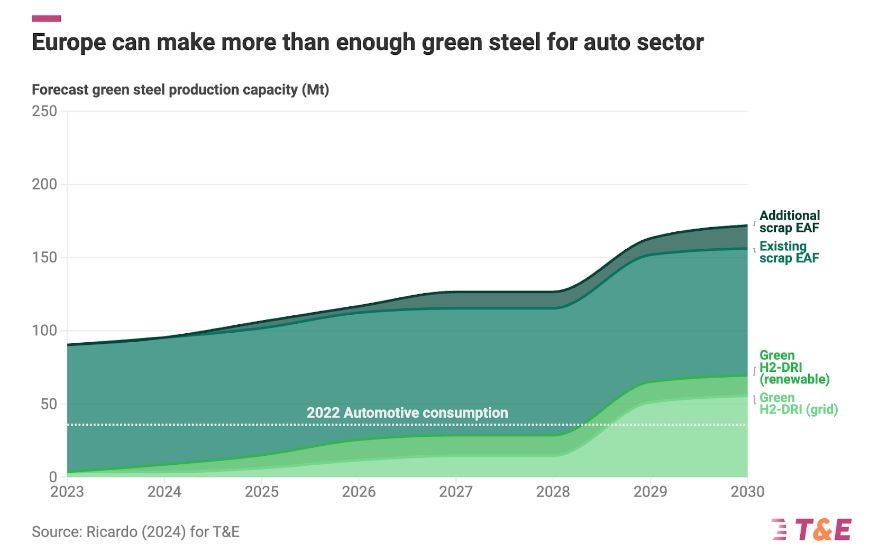
Using steel produced with green hydrogen and electric arc furnaces or recycled from scrap can significantly reduce CO2 emissions in European car manufacturing, a recent analysis by Transport & Environment (T&E) and consultancy Ricardo has revealed.
By 2030, this switch could cut emissions by 6.9 million tonnes, equivalent to the annual emissions of 3.5 million fossil fuel cars, the analysis found.

The spotlight is increasingly on the climate impact of car production as tailpipe emissions reduce to zero, with the automotive sector aiming for net-zero emissions by 2050. The study indicates that adopting 40% green steel in vehicle production by 2030 would only add €57 to the cost of an electric vehicle. By 2040, the cost difference for 100% green steel compared to conventional steel will drop to €8, driven by CO2 pricing and decreasing green steel production costs.
Green hydrogen is produced by electrolysing water using renewable electricity.
However, significant investment is required to establish low-carbon steel production, dependent on a reliable offtake market. The automotive sector, consuming 17% of EU steel, is well-positioned to drive this demand. T&E urges lawmakers to set targets for carmakers to increase their use of green steel in new vehicles from 2030 onwards.
“For less than a tyre change, Europe can build a green steel industry. The extra cost will be negligible and in time it will be cheaper than conventional steel. But we first need lawmakers to kick start the shift to low-carbon steel in the automotive industry,” said Alex Keynes, cars policy manager at T&E.
Ricardo’s production tracking suggests Europe could produce up to 172 million tonnes of low-carbon steel annually by 2030, sufficient to meet the automotive sector’s total steel demand, which was 36 million tonnes in 2022. The shift to lightweighting is also expected to reduce steel usage in car manufacturing over the next decade.
T&E recommends that at least 40% of steel in new cars should be green by 2030, increasing to 75% by 2035 and 100% by 2040. Carmakers should have an average target across all new cars, allowing them to distribute initial costs via premium models. These targets could be implemented through the revised EU End-of-life Vehicles (ELV) regulation.
“The automotive sector is the second biggest consumer of steel and well positioned to be a lead market for green steel in Europe. The relatively high value of cars, especially premium brands, means they can absorb the short-term green premium of low-carbon steel,” added Alex Keynes.



